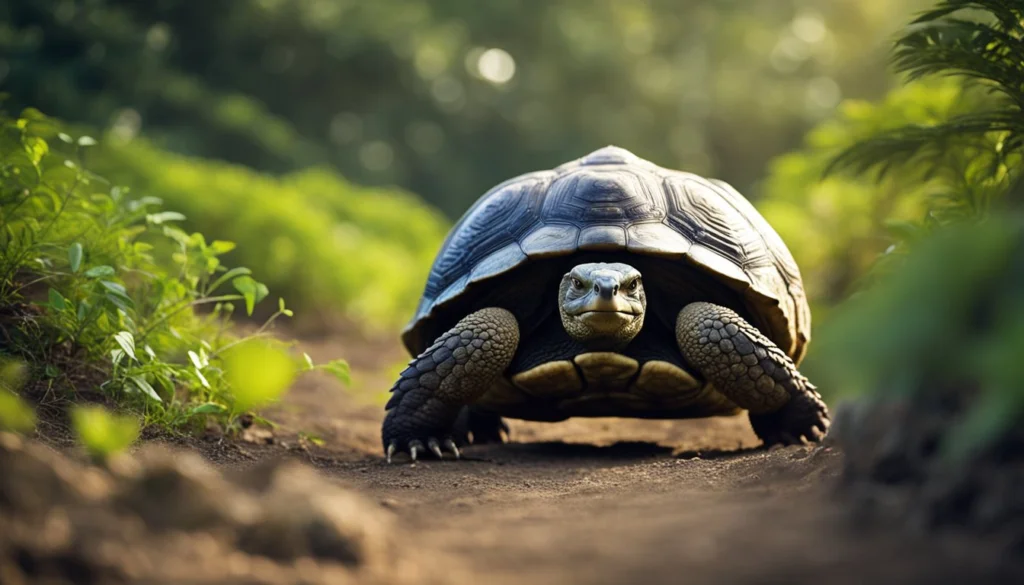The Galapagos Tortoise (Chelonoidis niger) is one of the most iconic and awe-inspiring animals on Earth. These giant reptiles, native to the Galapagos Islands, have captivated the imagination of scientists, explorers, and nature lovers for centuries. Known for their impressive size and long lifespan, Galapagos tortoises are living symbols of the extraordinary biodiversity of the Galapagos Islands. Here are seven amazing facts about these remarkable creatures.
1. They Are the Largest Tortoises in the World
Galapagos tortoises are the largest tortoises on the planet. They can weigh up to 900 pounds (400 kg) and reach lengths of 6 feet (1.8 meters). Their massive, dome-shaped shells are adapted to their environment, helping to protect them from predators, though they have very few natural predators in the wild.
Despite their size, Galapagos tortoises are surprisingly gentle and slow-moving creatures, spending most of their day grazing on grasses, leaves, and cacti.
Size and Weight:
- Weight: Up to 900 pounds (400 kg).
- Length: Can grow to 6 feet (1.8 meters).
2. They Can Live Over 100 Years
Galapagos tortoises are known for their incredible longevity. In the wild, they can live well over 100 years, with some individuals reaching ages of 150 years or more. In captivity, their lifespan can be even longer.
One famous Galapagos tortoise named Harriet lived to be 175 years old before passing away in an Australian zoo in 2006. This remarkable lifespan makes them one of the longest-living vertebrates on the planet.
Lifespan:
- In the wild: Over 100 years.
- In captivity: Can exceed 150 years.
3. Darwin’s Discovery of Their Evolutionary Importance
The Galapagos tortoise played a key role in Charles Darwin’s theory of evolution. When Darwin visited the Galapagos Islands in 1835 during the voyage of the HMS Beagle, he observed variations in the tortoises from different islands.
Darwin noticed that tortoises on islands with more lush vegetation had dome-shaped shells, while those on drier islands had saddle-backed shells that allowed them to reach higher for food. This observation helped him develop his theory of natural selection, which revolutionized the understanding of biology.
Role in Evolution:
- Darwin’s Theory: Key observation in the development of natural selection.
- Shell Variation: Saddle-backed and dome-shaped shells reflect different island environments.
4. They Are Herbivores with a Slow Metabolism
Galapagos tortoises are strict herbivores, feeding on grasses, fruits, leaves, and cacti. Their large, sturdy legs and slow movements are perfectly adapted for grazing over long periods. Their slow metabolism allows them to survive for long stretches without food or water, which is crucial in the arid environment of the Galapagos Islands.
In fact, Galapagos tortoises can go up to a year without eating by living off their fat reserves and drawing water from their food. This remarkable adaptation helped them survive long sea voyages in the past when sailors took them aboard ships as a source of fresh meat.
Diet and Survival:
- Herbivores: Eat grasses, fruits, leaves, and cacti.
- Slow metabolism: Can survive up to a year without food or water.
5. Their Shell Shapes Reflect Their Habitat
The shape of a Galapagos tortoise’s shell is a key adaptation to its environment. There are two primary types of shell shapes: dome-shaped and saddle-backed.
- Dome-shaped shells: Found on islands with lush vegetation. These tortoises feed primarily on low-growing plants and grasses.
- Saddle-backed shells: Found on drier islands where food is scarce. These tortoises have longer necks and higher shells, allowing them to reach taller vegetation, such as cactus pads.
This diversity in shell shape and feeding strategy is a prime example of how species evolve based on their environment.
Shell Types:
- Dome-shaped: Common in areas with abundant low vegetation.
- Saddle-backed: Allows tortoises to reach taller plants in drier areas.
6. They Have Few Natural Predators
Galapagos tortoises have few natural predators in the wild, largely because of their size and the lack of large predators on the Galapagos Islands. Historically, the biggest threat to their population came from humans.
During the 17th to 19th centuries, sailors and whalers hunted Galapagos tortoises for their meat, causing a dramatic decline in their numbers. Introduced species, such as rats, pigs, and dogs, also posed a threat by preying on eggs and young tortoises. Today, conservation efforts have helped protect the tortoises, and their populations are slowly recovering.
Predators and Threats:
- Few natural predators: Due to their size and isolation.
- Historical threat: Overhunting by humans and predation by introduced species.
7. Conservation Efforts Are Helping Their Population Recover
Galapagos tortoises were once on the brink of extinction due to overhunting and habitat destruction. In the early 20th century, it was estimated that only about 3,000 tortoises remained. Thanks to conservation efforts, their population has since increased to over 20,000 individuals.
Conservation programs, such as breeding centers and the removal of invasive species, have played a crucial role in their recovery. The Galapagos National Park and the Charles Darwin Research Station continue to work toward protecting these giant reptiles and their habitats.
Conservation Success:
- Population increase: From 3,000 to over 20,000.
- Conservation programs: Breeding centers and invasive species removal are helping the population recover.
Conclusion
The Galapagos tortoise is a living symbol of the Galapagos Islands and a testament to the power of evolution and conservation. These gentle giants, with their incredible size, slow pace, and long lifespan, continue to fascinate scientists and visitors alike. Thanks to ongoing conservation efforts, these remarkable reptiles are slowly making a comeback, ensuring that future generations will be able to marvel at the iconic Galapagos tortoise.
FAQ
How big do Galapagos tortoises get?
Galapagos tortoises can weigh up to 900 pounds and grow up to 6 feet in length, making them the largest tortoises in the world.
How long do Galapagos tortoises live?
They can live over 100 years in the wild, and some individuals in captivity have lived for more than 150 years.
Why are Galapagos tortoises important to Darwin’s theory of evolution?
Darwin’s observations of the variations in shell shapes and behaviors of Galapagos tortoises contributed to his development of the theory of natural selection.
What do Galapagos tortoises eat?
They are herbivores, feeding on grasses, leaves, cacti, and fruits.
How are Galapagos tortoises adapted to their environment?
Their shell shape and neck length vary depending on the environment. Dome-shaped tortoises feed on low vegetation, while saddle-backed tortoises have longer necks to reach taller plants.
What is being done to protect Galapagos tortoises?
Conservation efforts, including breeding programs and invasive species removal, have helped the population recover from the brink of extinction.


